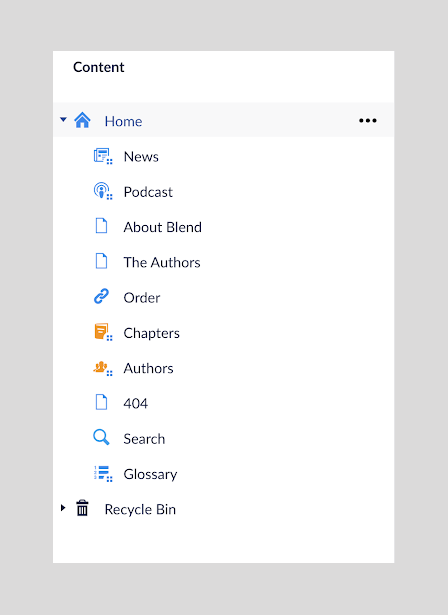Blend has a new CMS partner! Check out all the details on our newest supported platform.
Five Ways Umbraco Helps Editors
Talk around content management systems so often focuses on features and technological advances. But there’s another side to the equation: the people who use the content management system as an editorial tool.
5/12/2022
Categorized
Typically, solutions within a CMS require some level of coding — they are development-forward. After the features and model have been implemented, however, the site is then managed by editors who aren’t used to writing code. While an editor-friendly experience is one of the major benefits of a CMS, unfortunately, not all content editors feel empowered to own content management or digital strategies.
Luckily for website editors and marketing managers everywhere, some CMS platforms prioritize providing a higher quality editor experience. Umbraco is one of those. Here are five ways Umbraco focuses on the editorial experience within the CMS.
1. Create Flexibility with Umbraco’s Block Library
The more complex an individual template becomes, the less flexible it will be for editors. This is where a component- or block-focused layout can help. Umbraco provides an editorial block library that allows you to be more flexible with unique content layouts.
Blocks within the library can be limited to certain content types, making the editorial process easier for non-power users, and pulling blocks from the block library takes only about two clicks - giving editors control of content without the need of new code or deployments.

2. Fast and Flexible Image Layouts
Different content types need different image sizes. But resizing and re-uploading each individual image takes a very long time.
Umbraco arms editors with the ability to adjust images to fit the size needed for different scenarios — whether that be a header, or a particular block. Using this functionality, editors can assign image sizes based on the field or block so as an image is placed, the site already knows how to adjust the image — saving the editor time and stress.

3. Easy Navigation that Matches Your Content
Navigation is as much of a content item as any individual page, and that means editors should be able to easily update or rename links. It shouldn’t require a developer’s skill set to make changes.
Within Umbraco, navigation follows the site content tree, and editors can add a new page to the content tree using any of the existing page types. Or, if a navigation label changes, it’s easy to make adjustments — whether an editor is changing the term or moving pages within the content tree.
No matter the goal — access to the content tree allows teams to evolve their site structure as they evolve internally and as they grow their marketing and technical strategies.

4. Spread the Workload Through User Permissions & Workflows
As teams collaborate on content and implement new ideas, more people will need access to the CMS. And as access expands, the big concern turns toward who keeps a pulse on the added changes being made to content. More than that, who is responsible for policing any changes made that deviate from defined design standards?
This is where user permissions come in. Umbraco allows admins to set different levels of access for site editors according to their needed level of authority over the site. This means some editors may only gain access over certain content types, while others may own oversight for the entire site. This helps balance between a small editorial management team (which can result in a bottleneck) and a more distributed team that spreads the work without jeopardizing the integrity of content, marketing or design strategies.

5. Scheduled Publishing
Finally, we all know that an effective digital tool is one that elevates processes and strategies through improvements or efficiencies. You shouldn’t have to stop everything to publish at a specific time.
Staying true to this expectation - Umbraco allows editors to create and manage their content on their own schedule with the option to schedule content for later, to unpublish content whenever needed, or to publish the page and any other pages that fall beneath it in the content tree.
All of this allows for content to be published without disrupting your existing processes.

Conclusion
Content management systems aren’t just pieces of software: they’re important collaborative tools designed to make editing, publishing, and communication more efficient. It’s this focus that makes Umbraco one of the content management systems we most often recommend: an editor-focused, content-first dedication to content creation and publication.
Intersted in how Umbraco can work for you? Learn how Blend can customize Umbraco to fit your web goals with our Umbraco Plan Picker!
There's more to learn about Umbraco!
Want to learn more about the Friendly CMS we know as Umbraco?
Umbraco + Blend
Umbraco is a friendly, open-source CMS that supports your workflows, empowers your editors, and takes your website’s performance to new heights.